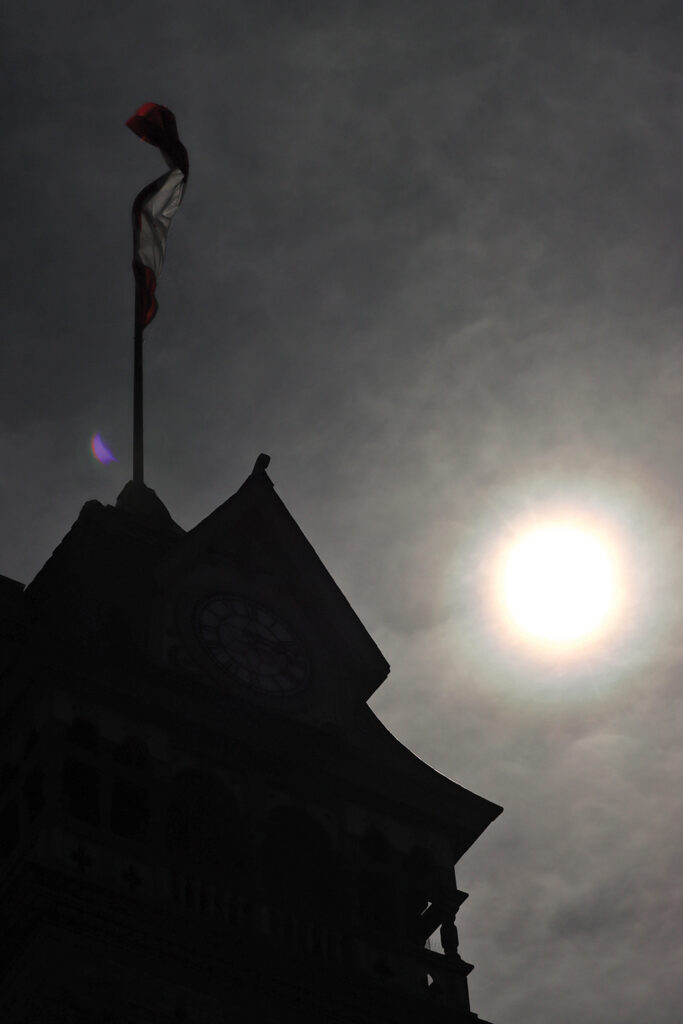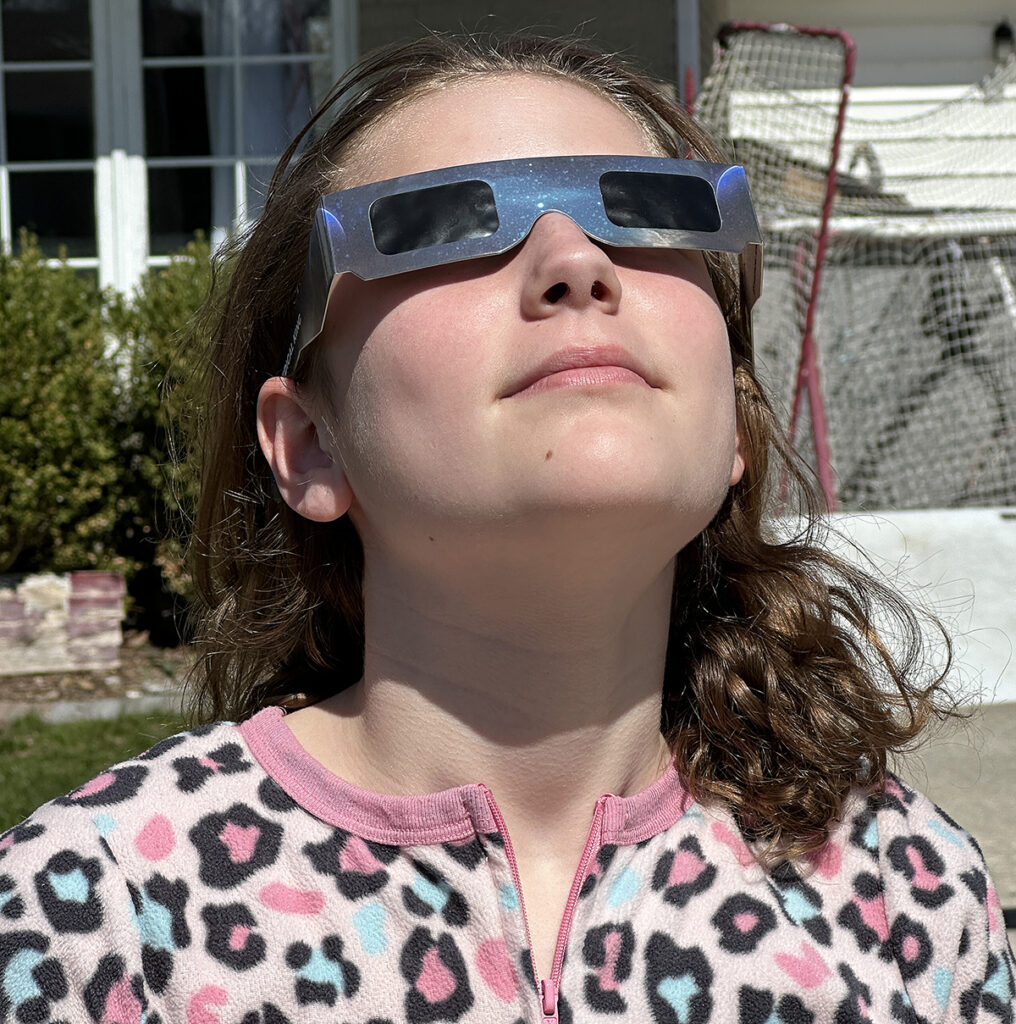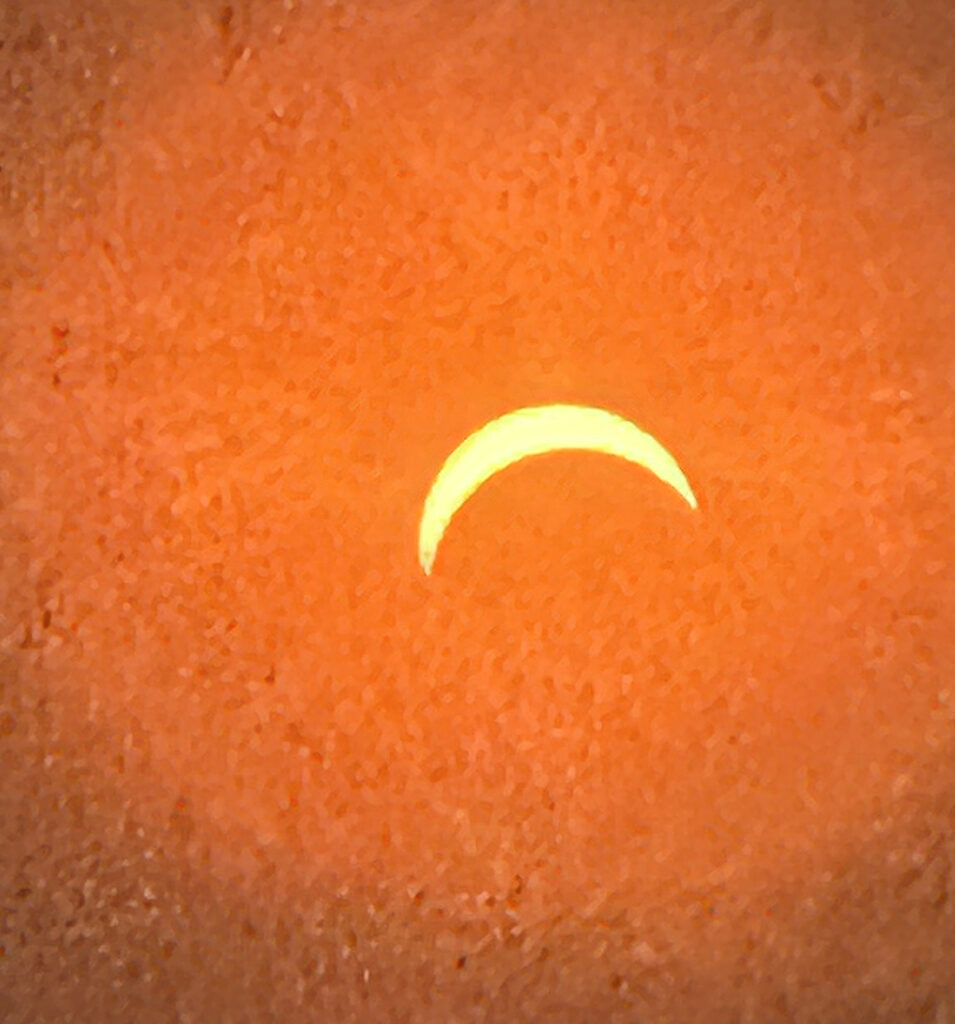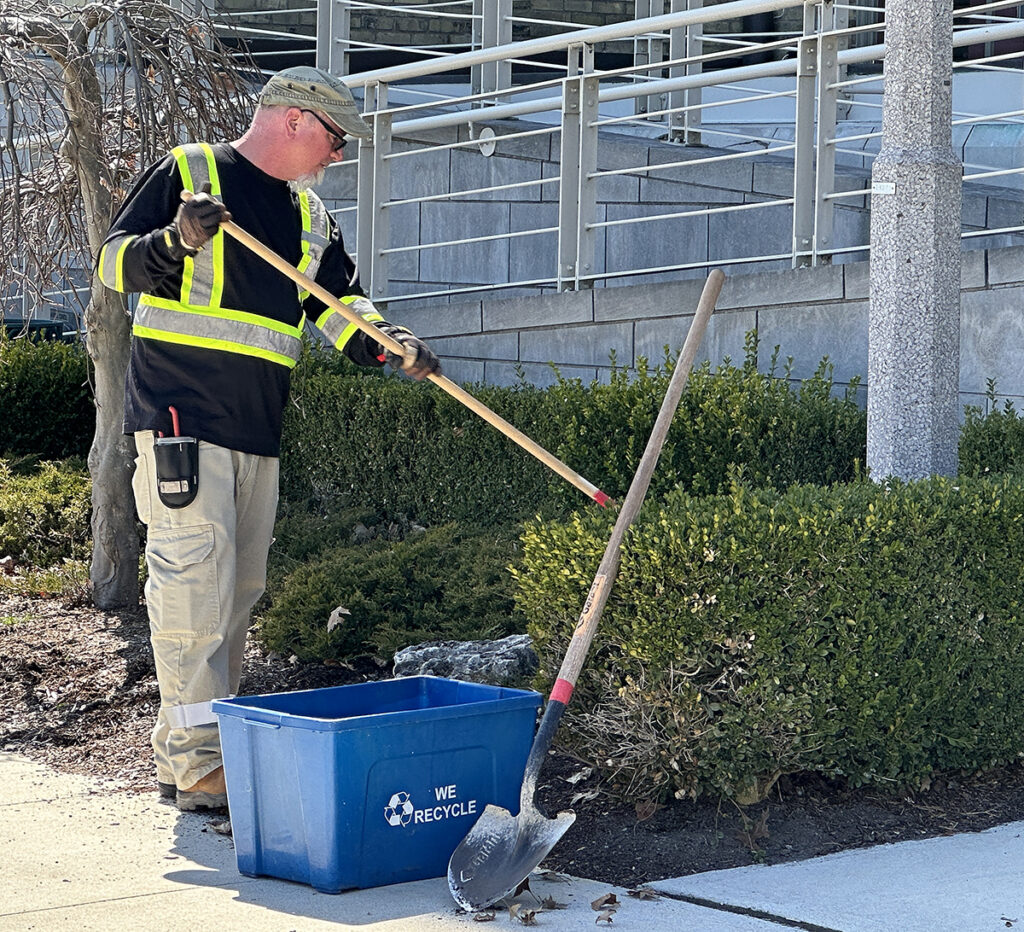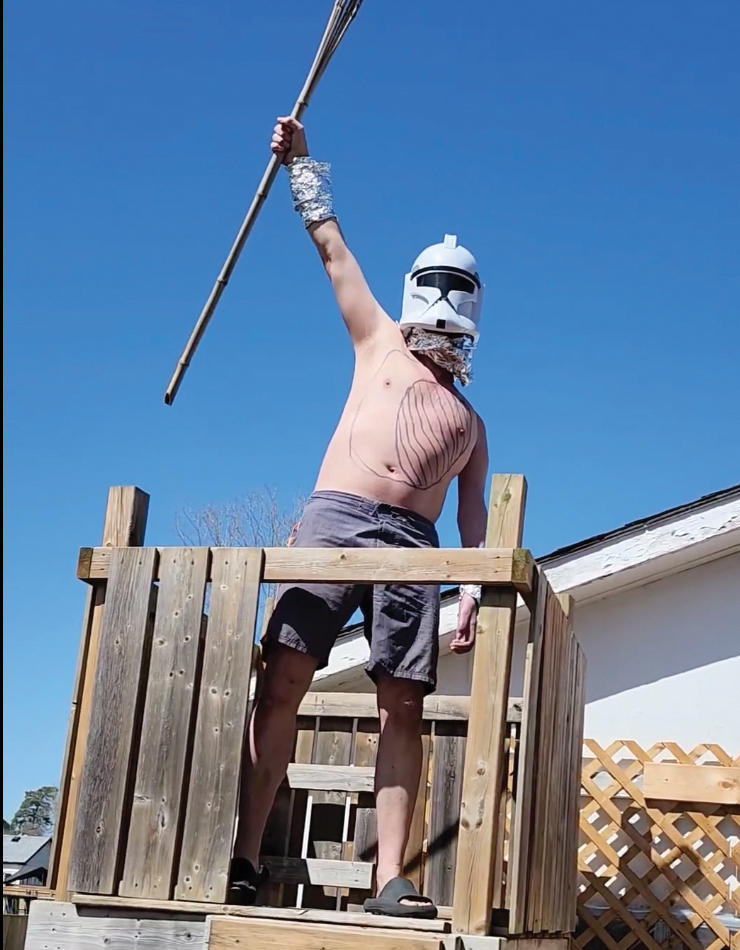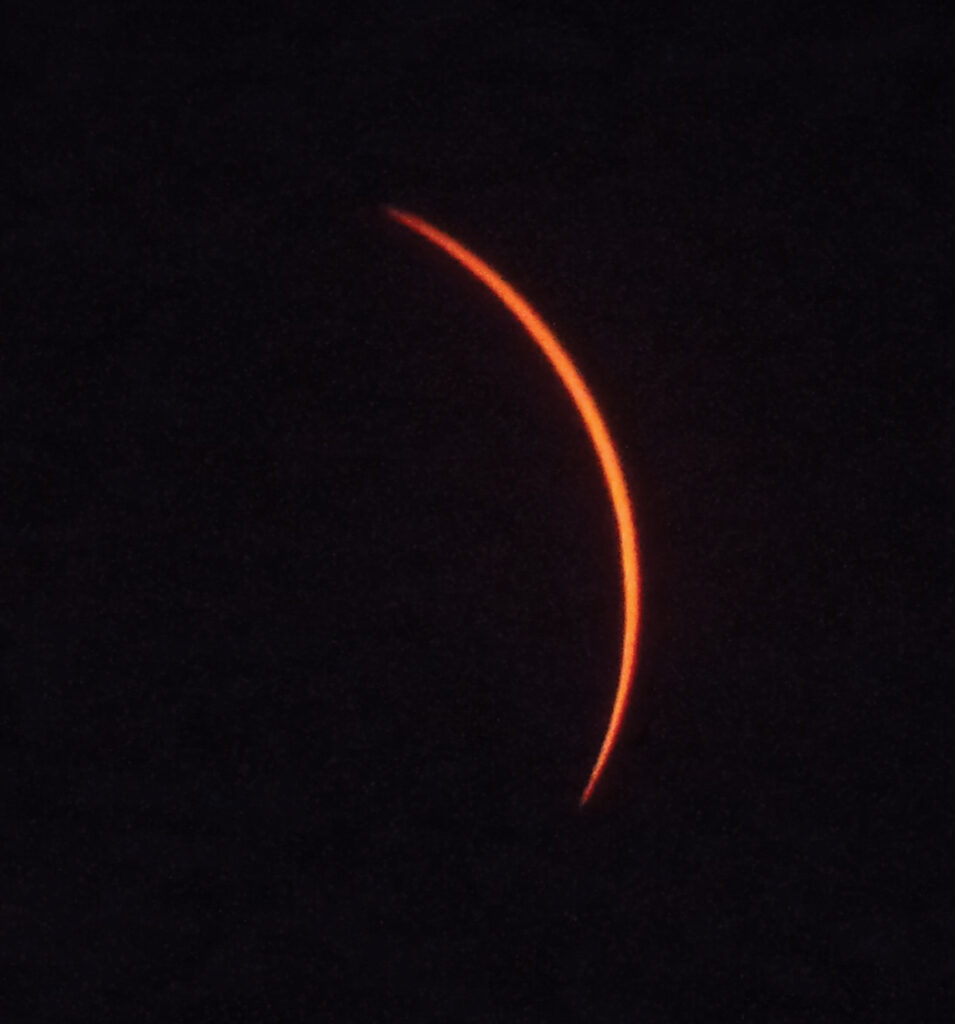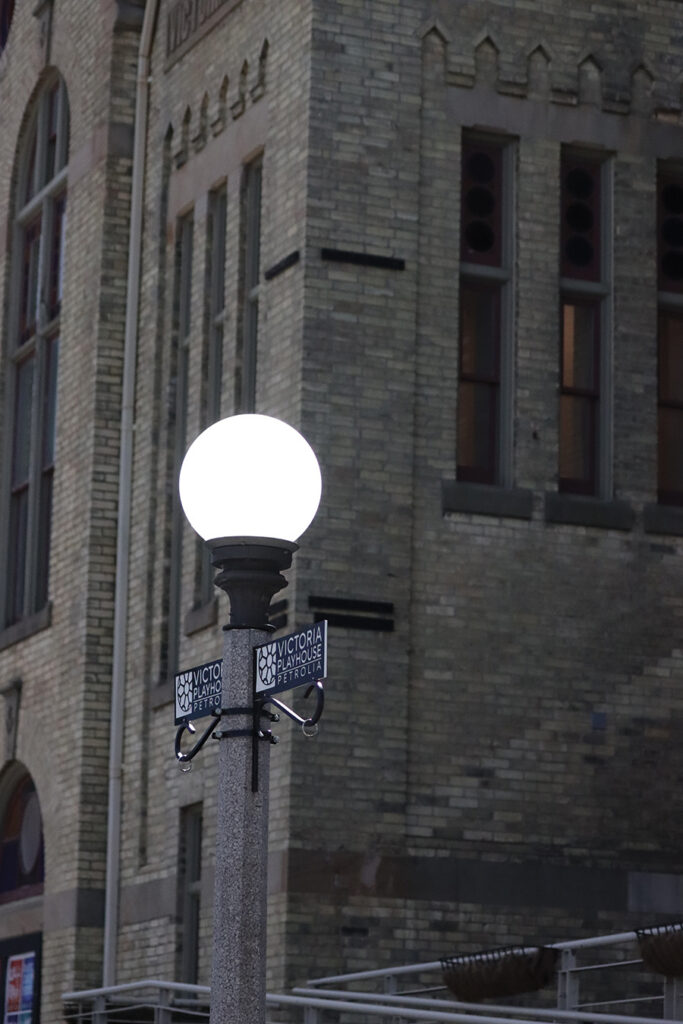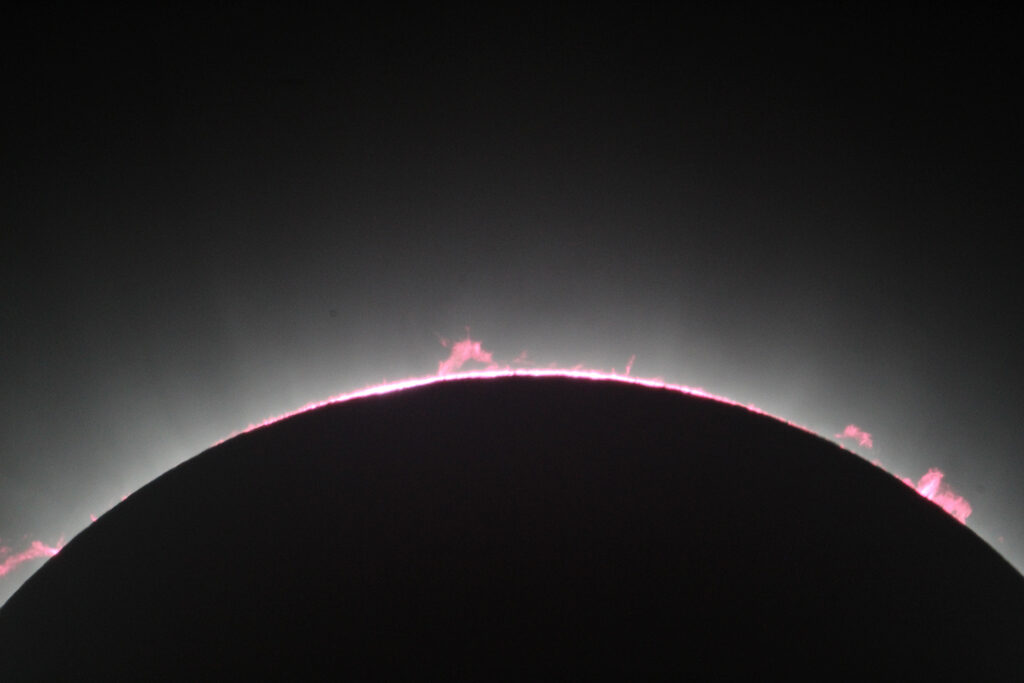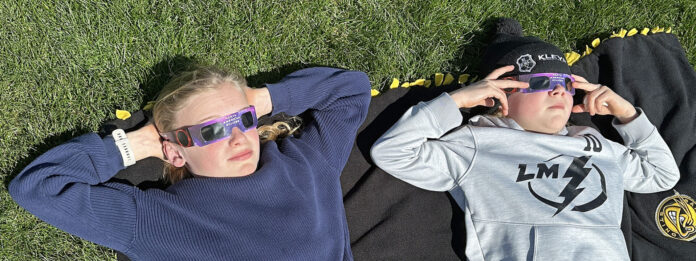
Heather Wright/The Independent
There wasn’t total darkness in Lambton County, however many people stopped to take in what experts call a once-in-a-lifetime event – a full solar eclipse.
The path of totality – when the moon passes between the sun and the Earth, completely blocking the face of the sun – passed over densely populated parts of Canada, Mexico and the US. Most solar eclipses happen over the ocean.
People from Windsor to Toronto to Montreal and into Eastern Canada, were plunged into total darkness for a couple of minutes while the moon completely blocked the sun. In Lambton, 99.3 per cent of the sun was covered by the moon. The temperature did drop and, if you didn’t know about the eclipse, you might think a big black cloud had passed before the sun.
But Kylie Bell and her grandmother, Rose Clements, were out with some solar glasses trying to get a look a the rare phenomenon. Bell thought it was interesting. Her grandmother remembers being in school the last time this happened in 1970.
“I saw it way back when I was about her age,” she said as Bell peered through the solar glasses to take a look at what was going on overhead.
“We had the boxes with the pinhole…We had the welding shields some people were using. Then of course, you’ve got a peek. So when I looked I was like, its totally dark with just a little bit of light and then it was like, Oh, yeah! Don’t look too long.”
Rod Miller, a professional firefighter with an interest in astrophotography, grabbed his telescope and camera and headed off to Fingal where there would be total darkness knowing the moment wouldn’t be as spectacular at his home in Corunna.
“If you’re in the totality like it’s Twilight; like the sun has already set and it’s dark.”
The drive was worth it. Miller captured the flaring of the sun as the moon blocked it.
“My kid is standing beside a telescope and that telescope has a very good quality lens. We just attached our digital camera to that and that’s how we got the good pictures,” he says.
Miller says he has more of a scientific mind and didn’t get emotional about the moment. But he said it was interesting.
“It’s a nice bright, sunny day and all of a sudden it’s like ‘why is it so dark?’ I don’t need my sunglasses anymore…you keep looking up at the sun and the moon gets more and more in the way and then all sudden you’re in darkness.”
